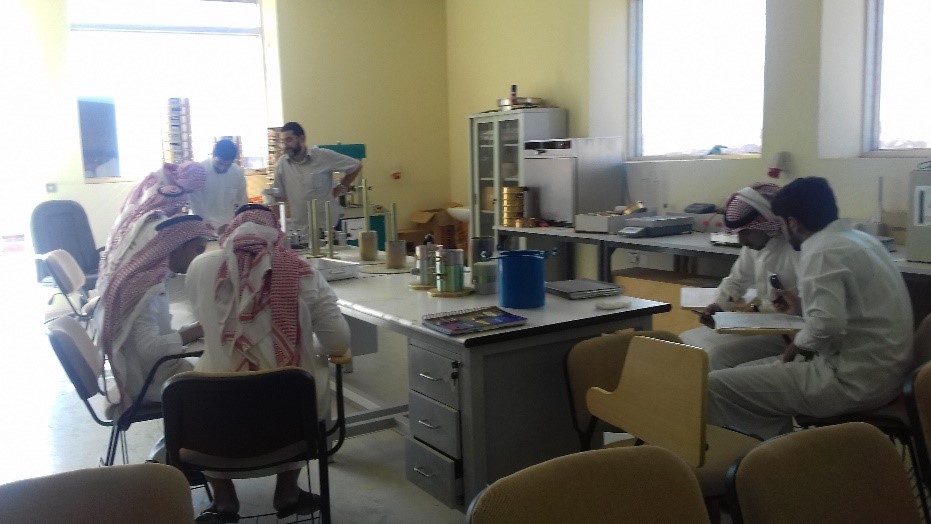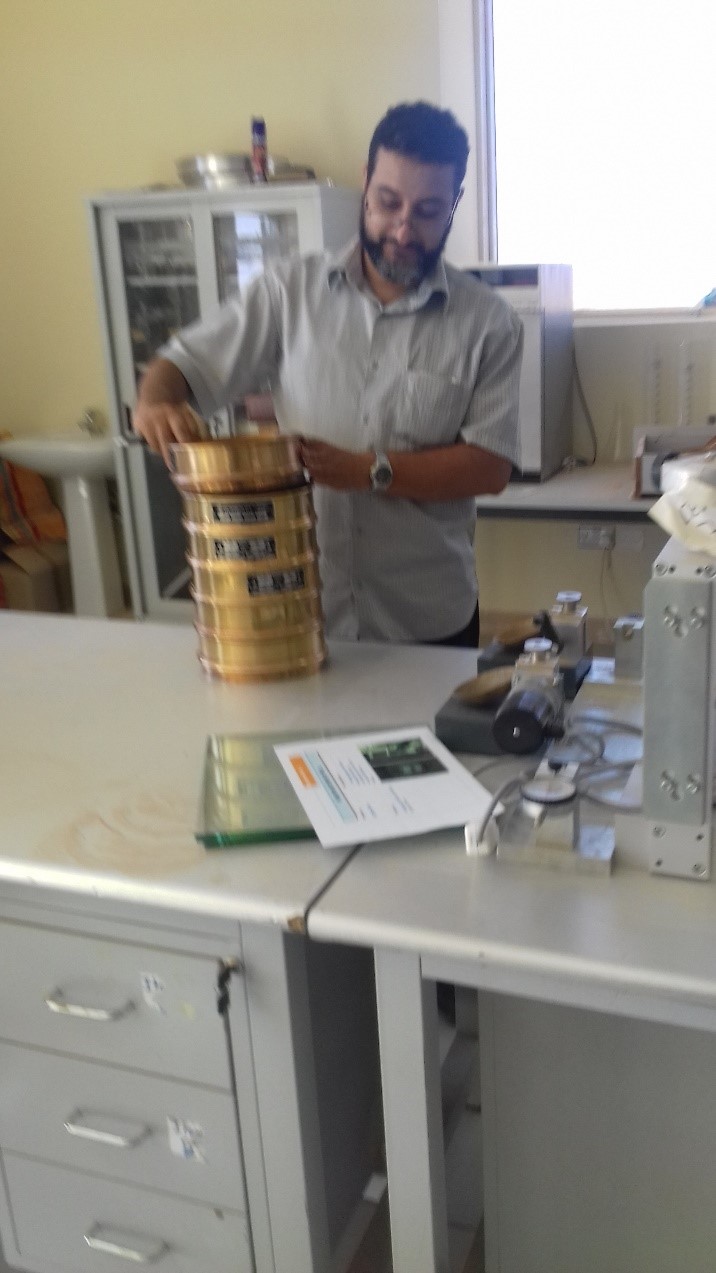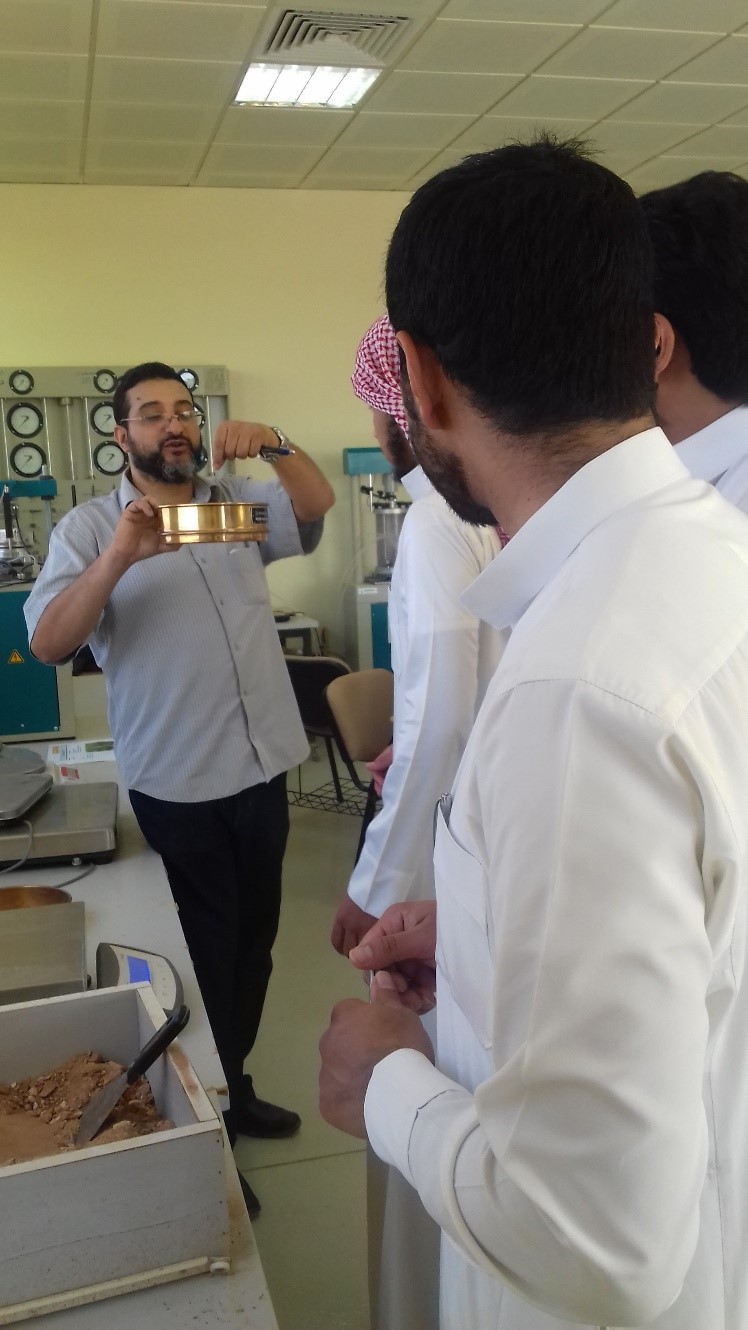The laboratory of Geotechnical engineering is one of the main civil engineering laboratories, which contains a series of devices. These devices have been attributed for one or more chapters in the Geotechnical Engineering course as part of a typical undergraduate curriculum.
The main objectives of laboratory course’s part are to introduce geotechnical problems from practical point of view, familiarize the students to common geotechnical test methods and terminology.
Naturally these laboratory resources are intended to use by undergraduate, alumina and researchers.
The Geotechnical laboratory resources are used for the following tests to perform according ASTM Standards:
- The mechanical sieve analysis and the hydrometer
- The equivalent sand test
- The relative density test
- The Atterberg limits (Liquid Limit and Plastic Limit)
- The laboratory automatic Proctor compaction
- The constant head permeability test
- The direct shear test
- The triaxial test
The mentioned tests are performed by students and the work is organized as a teamwork, having exchanges of difficulties and solutions. Laboratory Manual is written, and the steps are described in accordance with the applicable American Society for Testing and Materials (ASTM) and each experience is associated to ASTM standard number.
List of instruments & tools inside the laboratory
Instruments, equipment & Tools | Items |
|---|---|
WATER CONTENT TEST: Disturbed sample of moist soil; Balance capable of measuring to the nearest 0.01 gr; soil drying oven set at 110o ± 5oC; Oven-safe containers; Spatula; and Permanent marker for labeling containers. | 1 |
GRAIN SIZE DISTRIBUTION TEST: Balance, Set of sieves, Cleaning brush, Sieve shaker, Mixer (blender), 152H Hydrometer, Sedimentation cylinder, Control cylinder, Thermometer, Beaker, Timing device. | 2 |
ATTERBERG LIMITS TEST: Liquid limit device, Porcelain (evaporating) dish, Flat grooving tool with gage, Eight moisture cans, Balance, Glass plate, Spatula, Wash bottle filled with distilled water, Drying oven set at 105°C. | 3 |
LABORATORY COMPACTION TEST: Molds, Compaction apparatus, Extruder, Balance, drying oven, mixing pan, Trowel, #4 sieve, Moisture cans, Graduated cylinder, Straight Edge. | 4 |
HYDRAULIC CONDUCTIVITY: Coarse-grained soil; fixed-wall permeameter; Constant-elevation water reservoir; Tap water source; manometer; measuring tape or yardstick; Large vessel for collecting effluent; Scale capable of measuring to the nearest 1.0 gr; Timing device capable of measuring to the nearest second; and Vacuum source capable of achieving a vacuum of 500 mm Hg. | 5 |
DIRECT SHEAR TEST: Coarse-grained soil; fixed-wall permeameter; Constant-elevation | 6 |
The used instruments, equipment and tools | Experiments (Exercises) carried out by the laboratory | No |
|---|---|---|
| GRAIN SIZE DISTRIBUTION (GSD) TEST
| 1 |
| ATTERBERG LIMITS TEST:
| 2 |
| LABORATORY COMPACTION TEST:
| 3 |
| HYDRAULIC CONDUCTIVITY: | 4 |
Courses and Applied Experiments
Applied Experiments and Exercises | Course Code & Name | Items |
|---|---|---|
1- GRAIN SIZE DISTRIBUTION (GSD) TEST 2- ATTERBERG LIMITS TEST 3- LABORATORY COMPACTION TEST 4- HYDRAULIC CONDUCTIVITY | 1401-330 Geotechnical Engineering | 1 |
| 1401-432 Advanced Soil Mechanics | 2 |
B. Sc. Projects in Geotechnical Engineering Lab.:
- Design of foundations of the Engineering Faculty in the Northern Border University.
- Storm water drainage design.
- Design of foundations of engineering and a retaining wall for an underground car parking: case of four floors-building in Arar.
Sieve Analysis


